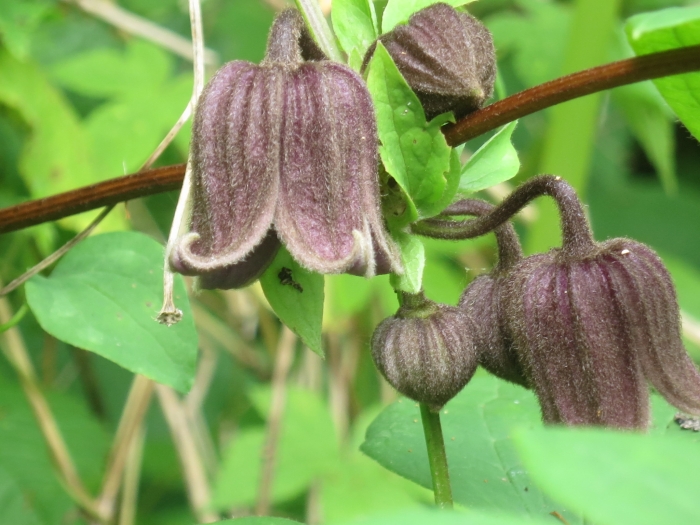Downy Clematis
(Clematis fusca)
Downy Clematis (Clematis fusca)
/
/

Repina Tatyana
CC BY 4.0
Image By:
Repina Tatyana
Recorded By:
Copyright:
CC BY 4.0
Copyright Notice:
Photo by: Repina Tatyana | License Type: CC BY 4.0 | License URL: http://creativecommons.org/licenses/by/4.0/ | Rights Holder: Repina Tatyana | Publisher: iNaturalist | Date Created: 2019-07-17T09:41:26-07:00 |

























Estimated Native Range
Summary
Clematis fusca, commonly known as downy clematis, is a deciduous climbing vine native to temperate mixed forests and forest margins in northeastern Asia, including regions in Russia, China, and Korea. It can reach lengths of 2-3 meters and has a twining growth habit, making it suitable for climbing up trellises, arbors, and fences. The leaves are pinnate with a downy texture, and the plant produces distinctive bell-shaped, purple flowers that are approximately 2-4 cm in diameter during late spring and early summer. These flowers are moderately showy and often attract pollinators such as bees and butterflies.
Downy clematis is valued for its ornamental flowers and its ability to provide vertical interest in garden designs. It is commonly used to create living screens, cover unsightly structures, and add height to border plantings. This species prefers partial shade but can tolerate full sun if kept moist. It requires well-drained soil and benefits from a layer of mulch to maintain consistent soil moisture. While generally low-maintenance, it may be susceptible to clematis wilt, a fungal disease that can cause sudden wilting and death of the plant. Pruning is important to maintain its shape and promote vigorous growth; it should be pruned in late winter or early spring.CC BY-SA 4.0
Downy clematis is valued for its ornamental flowers and its ability to provide vertical interest in garden designs. It is commonly used to create living screens, cover unsightly structures, and add height to border plantings. This species prefers partial shade but can tolerate full sun if kept moist. It requires well-drained soil and benefits from a layer of mulch to maintain consistent soil moisture. While generally low-maintenance, it may be susceptible to clematis wilt, a fungal disease that can cause sudden wilting and death of the plant. Pruning is important to maintain its shape and promote vigorous growth; it should be pruned in late winter or early spring.CC BY-SA 4.0
Plant Description
- Plant Type: Shrub, Vine
- Height: 2-10 feet
- Width: 2-3 feet
- Growth Rate: Slow, Moderate
- Flower Color: Black, Brown, Purple
- Flowering Season: Spring, Summer
- Leaf Retention: Deciduous
Growth Requirements
- Sun: Full Sun
- Water: Medium
- Drainage: Medium
Common Uses
Bee Garden, Bird Garden, Border Plant, Butterfly Garden, Hummingbird Garden, Showy Flowers
Natural Habitat
Temperate mixed forests and forest margins
Other Names
Common Names: Purple Clematis, Purple Virgin’s Bower
Scientific Names: , Clematis fusca, Clematis ajanensis, Clematis coreana, Clematis fusca f. kamtschatica, Clematis fusca f. mandshurica, Clematis fusca f. obtusifoliola, Clematis fusca var. amurensis, Clematis fusca var. amurensis, Clematis fusca var. coreana
GBIF Accepted Name: